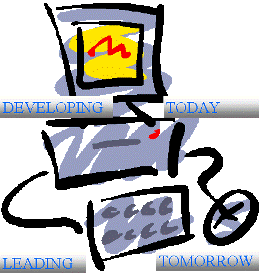XML the Basics 1
Running head: XML the Basics
XML the Basics
Michael DiDiego
XML the Basics 2
Table of Contents
Introduction .3
The Concept 3
History .4
Uses 4
Extensible .4
Web Oriented ..5
Components ..6
World Wide Web ..6
Summary ...7
Conclusions .. 8
References . 10
Appendix ............ 11
XML the Basics 3
Introduction
What is XML (Extensible Markup Language) and what can XML do for you? This paper addresses that simple question. The concept of XML will be explored. Its position in the computer world will be presented as a guide to its utility. A concluding statement will be made to judge its relevancy.
The Concept
At a quick glance XML appears to be HTML (Hypertext Markup Language). (See Appendix page 11). HTML is a programming language that uses tags which are the signs < and > to enclose its language. XML code is also enclosed with these signs. HTML connects your computers browser with Web servers to provide everyday readable text. XML does the same. However, that is where the similarity ends. XML goes beyond HTML by incorporating its features to work with it and extends its capability through the Web. XML provides meaning to what is coded whereas HTML just provides a presentation or appearance. For example, the code <title>Form</title> will tell HTML to make the word, Form, appear in the title bar of your Web browser. XML will extend this by providing context to the meaning of Form so it can be structured into a data relation.
History
XML began as a language for defining new documents for the World Wide Web. XML is derived from Standard Generalized Markup Language (SGML) which is the father of HTML. Thus, XML is a markup language and is considered the meta-language (Understanding XML, 2006, p. 1). According to Hoffer, Prescott, and McFadden (2007, p.7), metadata describes the characteristics or properties of end user data as well as the context for that data including its source. This is a starting point for extending the capability of XML. Also, such end user capability gives XML a lot to offer applications outside the Web (Understanding XML, 2006, p. 13).
XML the Basics 4
Uses
Since XML describes metadata, it provides for structuring data. Now other applications can be integrated that use structure data. For example, spreadsheets and network protocols as well as program configuration files can be used with XML. Please, note here that XML can represent two types of data structures: tabular (relational) and semi-structured. Spreadsheets are relational and Web pages or other business documents are semi-structured. XML can look at a spreadsheet application as well as the object languages represented in a computer program (Understanding XML, 2006, p. 2). Thus, XML provides a means of describing any kind of information (Morrison, 2002, p.10).
Extensible
What makes XML extensible that which can be extended is that it is not tied to any programming language, operating system or software vendor. Platform independence makes XML very useful as a means for achieving interoperability between different programming platforms and operating systems (Understanding XML, 2006, p. 2). For example, Microsoft Office, Microsoft SQL Server, and Microsoft .NET Framework are XML enabled because they allow end users and developers to produce and consume documents, network messages and other data (Understanding XML, 2006, p. 3). Since XML can define data structure, it can be manipulated and queried to satisfy users needs. As a language for metadata, it can describe documents consisting of many data types (Morrison, 2002, p.12).
Return to Web Site's Index
DELAWARE'S MIDDLETOWN ODESSA AND TOWNSEND AREA
